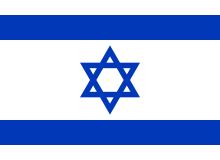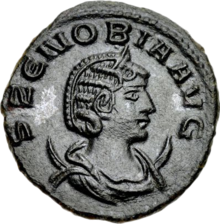Portal:Asia

 Asia (/ˈeɪʒə/ ⓘ AY-zhə, UK also /ˈeɪʃə/ AY-shə) is the largest continent in the world by both land area and population. It covers an area of more than 44 million square kilometers, about 30% of Earth's total land area and 8% of Earth's total surface area. The continent, which has long been home to the majority of the human population, was the site of many of the first civilizations. Its 4.7 billion people constitute roughly 60% of the world's population. Asia shares the landmass of Eurasia with Europe, and of Afro-Eurasia with both Europe and Africa. In general terms, it is bounded on the east by the Pacific Ocean, on the south by the Indian Ocean, and on the north by the Arctic Ocean. The border of Asia with Europe is a historical and cultural construct, as there is no clear physical and geographical separation between them. It is somewhat arbitrary and has moved since its first conception in classical antiquity. The division of Eurasia into two continents reflects East–West cultural, linguistic, and ethnic differences, some of which vary on a spectrum rather than with a sharp dividing line. A commonly accepted division places Asia to the east of the Suez Canal separating it from Africa; and to the east of the Turkish Straits, the Ural Mountains and Ural River, and to the south of the Caucasus Mountains and the Caspian and Black seas, separating it from Europe. China and India traded places as the largest economies in the world from 1 to 1800 CE. China was a major economic power for much of recorded history, with the highest GDP per capita until 1500. The Silk Road became the main east–west trading route in the Asian hinterlands while the Straits of Malacca stood as a major sea route. Asia has exhibited economic dynamism as well as robust population growth during the 20th century, but overall population growth has since fallen. Asia was the birthplace of most of the world's mainstream religions including Hinduism, Zoroastrianism, Judaism, Jainism, Buddhism, Confucianism, Taoism, Christianity, Islam, Sikhism, as well as many other religions. (Full article...) Featured articleUkiyo-e is a genre of Japanese art that flourished from the 17th through 19th centuries. Its artists produced woodblock prints and paintings of such subjects as female beauties; kabuki actors and sumo wrestlers; scenes from history and folk tales; travel scenes and landscapes; flora and fauna; and erotica. The term ukiyo-e (浮世絵) translates as 'picture[s] of the floating world'. In 1603, the city of Edo (Tokyo) became the seat of the ruling Tokugawa shogunate. The chōnin class (merchants, craftsmen and workers), positioned at the bottom of the social order, benefited the most from the city's rapid economic growth. They began to indulge in and patronize the entertainment of kabuki theatre, geisha, and courtesans of the pleasure districts. The term ukiyo ('floating world') came to describe this hedonistic lifestyle. Printed or painted ukiyo-e works were popular with the chōnin class, who had become wealthy enough to afford to decorate their homes with them. (Full article...)Selected Country Israel, officially the State of Israel, is a country in the Southern Levant region of West Asia. It is bordered by Lebanon to the north, Syria to the northeast, Jordan to the east, the Red Sea to the south, Egypt to the southwest, the Mediterranean Sea to the west, and the Palestinian territories – the West Bank along the east and the Gaza Strip along the southwest. Tel Aviv is the country's financial, economic, and technological center. Israel’s governmental seat is in its proclaimed capital of Jerusalem, although Israeli sovereignty over East Jerusalem is of limited international recognition. Israel is located in a region known historically as Canaan, Palestine, and the Holy Land. In antiquity, it was home to several Canaanite, and later, Israelite and Judahite states, and is referred to as the Land of Israel in Jewish tradition. Situated at a continental crossroad, the region subsequently came under the rule of many different empires with holy sites of various faiths attracting waves of immigration throughout history from across the Old World. The late 19th century saw the rise of Zionism in Europe, a movement seeking a Jewish homeland, which garnered British support during World War I. During the war, British occupation led to the setting up of Mandatory Palestine in 1920. Increased Jewish immigration combined with British colonial policy led to intercommunal conflict between Jews and Arabs. The 1947 UN Partition Plan triggered a civil war between the two groups, which saw the expulsion and flight of most of Mandatory Palestine's predominantly Arab population, known as the Nakba. A minority remained and became Arab citizens of Israel. (Full article...)Featured biographySeptimia Zenobia (Palmyrene Aramaic: 𐡡𐡶𐡦𐡡𐡩, Bat-Zabbai; c. 240 – c. 274) was a third-century queen of the Palmyrene Empire in Syria. Many legends surround her ancestry; she was probably not a commoner and she married the ruler of the city, Odaenathus. Her husband became king in 260, elevating Palmyra to supreme power in the Near East by defeating the Sasanian Empire of Persia and stabilizing the Roman East. After Odaenathus' assassination, Zenobia became the regent of her son Vaballathus and held de facto power throughout his reign. In 270, Zenobia launched an invasion that brought most of the Roman East under her sway and culminated with the annexation of Egypt. By mid-271 her realm extended from Ancyra, central Anatolia, to Upper Egypt, although she remained nominally subordinate to Rome. However, in reaction to the campaign of the Roman emperor Aurelian in 272, Zenobia declared her son emperor and assumed the title of empress, thus declaring Palmyra's secession from Rome. The Romans were victorious after heavy fighting; the empress was besieged in her capital and captured by Aurelian, who exiled her to Rome, where she spent the remainder of her life. (Full article...)General imagesThe following are images from various Asia-related articles on Wikipedia. Featured picture Credit: Shahee Ilyas An aerial photo of Malé, the capital of the Republic of Maldives. Malé is located on Malé Island in the Kaafu Atoll, but administratively it is not considered part of Kaafu. The island is heavily urbanised, with the city, one of the most densely populated in the world, taking up essentially its entire landmass.
Did you know...
Updated: 6:33, 14 February 2024 In the news
Related portalsMajor Religions in Asia Middle East Central Asia and Surroundings Indian Subcontinent Southeast Asia East Asia Selected panorama
The Hajj is an annual Islamic pilgrimage to Mecca, Saudi Arabia, the holiest city for Muslims, and a mandatory religious duty for Muslims that must be carried out at least once in their lifetime by all adult Muslims who are physically and financially capable of undertaking the journey, and can support their family during their absence. TopicsCategoriesAssociated WikimediaThe following Wikimedia Foundation sister projects provide more on this subject:
More portalsShortcuts to this page: Asia portal • P:ASIA Purge server cache |





























































































